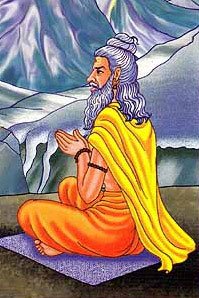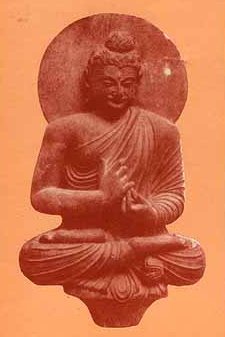Shankamana, Saṅkamana, Śaṅkamāna, Sankamana, Samkamana: 4 definitions
Introduction:
Shankamana means something in Hinduism, Sanskrit, Buddhism, Pali, Jainism, Prakrit. If you want to know the exact meaning, history, etymology or English translation of this term then check out the descriptions on this page. Add your comment or reference to a book if you want to contribute to this summary article.
The Sanskrit term Śaṅkamāna can be transliterated into English as Sankamana or Shankamana, using the IAST transliteration scheme (?).
In Hinduism
Purana and Itihasa (epic history)
Source: Cologne Digital Sanskrit Dictionaries: The Purana IndexŚaṅkamāna (शङ्कमान).—A son of Pravīra, the King of the Mahiṣas.*
- * Brahmāṇḍa-purāṇa III. 74. 187.

The Purana (पुराण, purāṇas) refers to Sanskrit literature preserving ancient India’s vast cultural history, including historical legends, religious ceremonies, various arts and sciences. The eighteen mahapuranas total over 400,000 shlokas (metrical couplets) and date to at least several centuries BCE.
Languages of India and abroad
Pali-English dictionary
Source: BuddhaSasana: Concise Pali-English Dictionarysaṅkamana : (pr.p. of saṅkati) doubting; hesitating. (nt.), a passage; a bridge; going over; to move from place to place.
Source: Sutta: The Pali Text Society's Pali-English DictionarySaṅkamana, (nt.) (fr. saṅkamati) lit. “going over, ” i e. step; hence “bridge, ” passage, path S. I, 110; Vv 5222; 775; Pv. II, 78; II, 925; J. VI, 120 (papā°). Cp. upa°. (Page 662)

Pali is the language of the Tipiṭaka, which is the sacred canon of Theravāda Buddhism and contains much of the Buddha’s speech. Closeley related to Sanskrit, both languages are used interchangeably between religions.
Prakrit-English dictionary
Source: DDSA: Paia-sadda-mahannavo; a comprehensive Prakrit Hindi dictionary1) Saṃkamaṇa (संकमण) in the Prakrit language is related to the Sanskrit word: Saṃkramaṇa.
2) Saṃkāmaṇa (संकामण) also relates to the Sanskrit word: Saṃkramaṇa.
3) Saṃkāmaṇā (संकामणा) also relates to the Sanskrit word: Saṃkrāmaṇā.
Prakrit is an ancient language closely associated with both Pali and Sanskrit. Jain literature is often composed in this language or sub-dialects, such as the Agamas and their commentaries which are written in Ardhamagadhi and Maharashtri Prakrit. The earliest extant texts can be dated to as early as the 4th century BCE although core portions might be older.
See also (Relevant definitions)
Ends with: Ashankamana, Vishankamana.
Full-text: Samkramana, Vishankamana, Shank.
Relevant text
Search found 4 books and stories containing Shankamana, Saṅkamana, Śaṅkamāna, Sankamana, Samkamana, Saṃkamaṇa, Saṅkamaṇa, Saṃkāmaṇa, Saṅkāmaṇa, Saṃkāmaṇā, Saṅkāmaṇā; (plurals include: Shankamanas, Saṅkamanas, Śaṅkamānas, Sankamanas, Samkamanas, Saṃkamaṇas, Saṅkamaṇas, Saṃkāmaṇas, Saṅkāmaṇas, Saṃkāmaṇās, Saṅkāmaṇās). You can also click to the full overview containing English textual excerpts. Below are direct links for the most relevant articles:
Brihad Bhagavatamrita (commentary) (by Śrī Śrīmad Bhaktivedānta Nārāyana Gosvāmī Mahārāja)
Verse 2.3.47 < [Chapter 3 - Bhajana (loving service)]
Bhagavati-sutra (Viyaha-pannatti) (by K. C. Lalwani)
Part 7 - On the variety of intake < [Chapter 1]
The Brahmanda Purana (by G.V. Tagare)
Chapter 74 - Royal Dynasties < [Section 3 - Upodghāta-pāda]
Visuddhimagga (the pah of purification) (by Ñāṇamoli Bhikkhu)
(1) The Kinds of Supernormal Power < [Chapter XII - The Supernormal Powers (iddhividha-niddesa)]